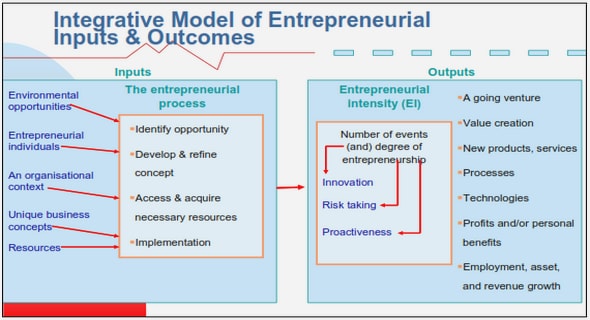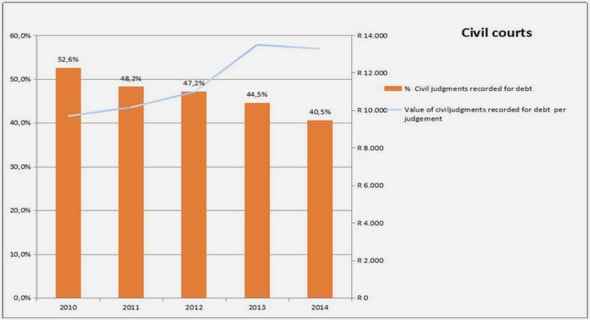Get Complete Project Material File(s) Now! »
Government to citizen (G2C)
Citizen can access government information instantly, conveniently without physically visiting an office. Other benefits of serving citizens online includes easy access to educational information and resources. As described by (Fang, 2002), government to citizens refers to putting public services and information online for citizen use. It provides 24/7 service and information to citizens by posting of forms and applications online. Citizen can access government information instantly, conveniently without visiting an office. These services among others includes renewal of driver’s license, payment of taxes, fines, fees to the state and local government and other kinds of bills. Ndou (2004) identified that G2C allows citizen to access electronic government services anytime, directly and conveniently through the use of various channels (personal computers, WebTV, mobile phone or wireless device). It also allows government to talk, listen, support and communicate with its Electronic Government citizens and encourage their involvement in a local community life through email or online discussion forum.
Government to Business (G2B)
According to Yen and Donna (2005), this category focuses on the ability to cut down cost, collect information and make better inventory decisions. In G2B, government can acquire items, pay invoices, and perform other business activities in a more beneficial way. Obtaining data to scrutinize and assist in decision making can be done, to support the government through G2B. Some of the advantages for this type are the online regulations available for agencies and increasing electronic tax facilities for industry. It was a big problem for industries to search information pertaining to their business interests. But now all the information can be check in one place with a click. Fang (2002), discussed that, government to business are those services used by businesses, corporations and government agencies for commercial purpose.
Government to government (G2G)
Yen and Donna (2005), explained that this category of service includes government improving the efficiency of transaction and business functions within itself or with other external governments. It facilitates and integrates systems that allow government organizations, departments, agencies and offices to talk to each other. Fang (2002), wrote that G2G provides cooperation of both external and internal agencies and improve service inside or outside of governments. It also includes exchange of information within and outside governments. Ndou (2004) stated that, G2G build relationship with organizations, such as national, local, regional and other foreign government organizations. The Internet and other web based technologies contributes to the sharing of databases and other online resources between government agencies and other governments.
Government to Employees (G2E)
Also Fang (2002) stated that, this group of service consist of relationship between government and its employees. G2E encourage employees to participate in work activities in an efficient and effective way. G2E also provides e-learning opportunities for government workers, bringing employees together and increasing efficiency and productivity among them. Ndou (2004) further explained that it gives the possibilities to employees to accessing the policies related to compensation and benefits. G2E is a broad area which requires full attention. G2E facilitates management of employees and communicates with government employees in order to make their e-career and e-office possible (Fang, 2002).
STAGES OF E-GOVERNMENT DEVELOPMENT
There exist several stages, phases and processes of developing and implementing electronic government systems. Some of these model stages and phases of e-government development are case and domain specific and can be applied in certain jurisdictions (Jayashree and Marthandan, 2010). E-government has become very critical for development and survival in this modern era of electronic society, ICT/IT and digital information age. Many different models of electronic government development have been proposed. Some includes the World Bank’s 3 stage model of Publish, Interact and Transact; the UN’s 5 stage model of Emerging presence, Enhanced presence, Interactive presence, Transactional presence and Seamless or fully integrated presence and Gartners 4 stage model of Web presence, Interaction, Transaction and Transformations (Jayashree & Marthandan, 2010). But according to Layne and Lee (2001), electronic government development can be grouped into 4 stage model namely; Catalogue, Transaction, Vertical integration and Horizontal integration.
Catalogue: This is the stage where a website or government portal is developed to provide some government information to the public, citizens and business organisations.
Transaction: This is the stage where some capabilities of cataloguing are extended to provide government forms online for the public, citizens and business organisations.
Vertical integration: This stage involves transforming government services rather than automating existing processes. It focuses on integrating government functions at different levels such as local and state governments agencies.
Horizontal integration: This is the stage where different government functions from separate systems are integrated to provide a seamless fully functional system and services.
E-GOVERNANCE AND E-GOVERNMENT
Fang (2002) claims that the scope of electronic governance is beyond electronic government. While electronic government is concern with service delivery and information to the public via internet and web based technologies and platform, electronic governance allows citizens to participate in government activities and events such as e-voting, online discussion forums, policy and public decision making. Therefore electronic governance covers government, citizen’s participations, parliamentary and judiciary functions. It brings new concept of citizenship and allow citizens to communicate with government, participate in policy and decision making. Electronic governance is therefore broader and has more implication than E-government. Basu (2004) stated that E-governance is more than creating a government website on the Internet. E-governance supports and enhances governance between governments, businesses and citizens using ICT/IT to help maintain a good relationship between these groups and support their processes and activities. E-governance means to support and stimulate good governance. According to Backus (2001), electronic governance helps to support, and manage the entire affairs and resources of a country at all levels. However the objective of E-government is to fulfill the citizen’s needs through cost effective online services. Government agencies can create transparent, accountable, secure and effective relationship with citizens, businesses and other agencies by the help of information and communication technologies (ICT/IT).
ACCOUNTABILITY AND ELECTRONIC GOVERNMENT
Accountability is a relationship in which one party, the accountor recognizes an obligation to explain and justify their conduct to another the accountee (Pollitt, 2003). Accountability is a requirement of each individual’s participation in any social world. According to Romzek (2000), « public administration accountability involves the means by which public agencies and their workers manage the diverse expectations generated within and outside the organization ». Accountability is the logic behind any new public management by governments all over the world. Electronic government provides the transparent mechanism within which accountability is visible. It assures that government structures, processes and transactions are visible to citizens, businesses and other stakeholders thereby removing mistrust, bureaucracy and corruption. Thus electronic government can provide accountability in the proper management of educational resources within the country (Oreste et. al, 2005).
TRANSPARENCY IN ELECTRONIC GOVERNMENT
Electronic government enforces an open system in which there is visibility and transparency. Among the benchmark for national integrity and security system are; public awareness, public anti-corruption strategies, public participation, watch-dog agencies, the judiciary, the media, the private sector, and international organisations. These pillars are interdependent; identifying opportunities for reinforcing and utilizing each of these pillars in the fight against corruption is critical to national development. Electronic government uses trusted, visible and secure multiple channels for resource allocation and distribution thereby enabling other watch dog agencies to track performance and management of resources.
Electronic participation by stakeholders including citizens, private, public, academia and international community will ensure the combating of eCorruption. eTransparency means the use of information and communication technologies (ICT/IT) to make public sector decisions and actions more open to scrutiny. It is more than just providing basic information about government up to enabling public control over civil servants. Some benefits includes; reducing costs of transparency, access to transparent information and making public servants behave less corruptly and empowering citizens. Shadrach (2002), claimed loosely framed electronic government plans pose a new threat of e-corruption hence the need for robust policy and guidelines implementation to ensure transparency and preventing e-corruptions in the new digital government. When put to proper use, electronic government can enforce transparency in monitoring, tracking and distribution of educational resources hence preventing embezzlement and fraud.
BARRIERS OF E-GOVERNMENT
As stated by Jaeger (2003), ICT/IT cost is going down and good ICT/IT infrastructure is available, but there are still barriers for E-government implementation. ICT/IT services continue to be more affordable in developed countries than in developing countries. Also the relative price for ICT/IT services is highest in developing countries than developed countries (ITU-ICT Facts and Figures, 2009). A robust infrastructure consists of hardware and software that assures security of electronic services to citizens, businesses and other governments. According to Belanger and Hiller (2006), there are some limitations to achieve E-government objectives and application in every decision making and planning process. Lack of adequate finance and skilled personnel may delay electronic government implementation, therefore it is important to have appropriate investments for better electronic government implementation. Recent studies of electronic government projects identified lack of technical personnel and financial capabilities as major barriers to design, development and implementation of successful E-government systems. Even though people will want to use any means of getting better services, trust is an important element determining whether people will want to obtain services via web based platforms. The willingness and capabilities of citizens play a major role to implement good electronic government. Some barriers to electronic government identified by Lam (2005) are;
Strategy Barriers
1. Lack of common goals and objectives. Lack of collective thoughts and aims create confusion among governmental agencies and also become a part of conflict in responsibilities. It is necessary to have mutual understanding between government agencies and citizens for implementing electronic government.
2. Lack of ownership and authority. Lack of proper control and accountability hinders electronic government initiatives.
3. Deficiency of implementation guidance. Improper direction and guidelines hinder the successful implementation of electronic government.
4. Financial Issues. Inadequate finance hinders the successful implementation of electronic government projects.
Technology Barriers
1. Lack of infrastructure and architecture: The lack of appropriate infrastructure and architecture impedes progress of electronic government projects (Lam, 2005). Ndou (2004) stated that; the main challenge for electronic government initiative is ICT infrastructure. Basic education and knowledge of IT is necessary to accept and use E-government services. According to Chen et al., (2006) infrastructure development is critical before government can consider any project related to E-government. Lack of back-end infrastructure will mean government and citizens will be unable to perform transactional activities and further stages of electronic government will delay.
2. Deficiency of data standards: The key function of electronic government is to provide information and data in accessible formats to citizens and other stakeholders. Lack of standards poses a danger to the development, implementation and use of electronic government. Standardization in data formats and the adoption of a common data model is required to eliminate disparities in data formats. (Lam, 2005).
3. Different security models: Lam (2005) stated that, one of success factor in electronic government adoption is trust and confidence between users and government. According to Seifert (2003), one of the most significant barriers for implementing E-government is information security.
4. Lack of resources: Government lacks the critical mass of resources to complete electronic government projects. Most electronic government initiatives fail to produce expected outcomes due to inadequate resources and misappropriations.
Policy Barriers
1. Apprehension over citizen privacy. (Lam, 2005; Seifert et al., 2004; Seifert, 2003 and Basu, 2004) agree that privacy is a big issue for citizens and it is also a threat in E-government. Therefore sharing of data between government agencies should be done in controlled and proper way to protect sensitive information regarding citizens. Governments collect large amount of data regarding citizens through different transaction on daily basis and is responsible for personal information they hold. Protecting the privacy of citizens and businesses information is a critical issue in electronic government.
2. Data ownership and control. Many government organizations consider themselves as owners of particular records and they are very concern about how to share that information or records with others. Rights or ownership to data must be clear in order to achieve E-government objectives. (Lam, 2005).
3. Policy formulation. Proper policies and mutual understanding is needed in order to meet the purpose of electronic governments.
4. Policy execution. Correct enforcement of policies, standards, rules and regulations is the benchmark for a successful electronic government. According to Lam (2005), lack of exhaustive course of action and inappropriate steps of development may delay electronic government projects.
Table of contents :
1 INTRODUCTION
1.1 BACKGROUND INFORMATION
1.2 PROBLEM STATEMENT
1.3 DEFINITION OF ELECTRONIC GOVERNMENT
1.4 RESEARCH QUESTIONS
1.5 SCOPE OF STUDY
1.6 AIM OF STUDY
1.7 OBJECTIVE OF STUDY
1.8 CONCEPTUAL FRAMEWORK
1.9 SIGNIFICANCE OF STUDY
1.10 LIMITATIONS OF STUDY
1.11 STRENGTHS OF THE STUDY
1.12 DEFINITIONS OF TERMINOLOGY
2 LITERATURE REVIEW
2.1 ELECTRONIC GOVERNMENT
2.2 FUNCTIONS OF ELECTRONIC GOVERNMENT
2.3 CATEGORISATION OF ELECTRONIC GOVERNMENT
2.3.1 Government to citizen (G2C)
2.3.2 Government to Business (G2B)
2.3.3 Government to government (G2G)
2.3.4 Government to Employees (G2E)
2.4 STAGES OF E-GOVERNMENT DEVELOPMENT
2.5 E-GOVERNANCE AND E-GOVERNMENT
2.6 ACCOUNTABILITY AND ELECTRONIC GOVERNMENT
2.7 TRANSPARENCY IN ELECTRONIC GOVERNMENT
2.8 BARRIERS OF E-GOVERNMENT
2.8.1 Strategy Barriers
2.8.2 Technology Barriers
2.8.3 Policy Barriers
2.8.4 Organization Barriers
2.9 STRENGTHS AND OPPORTUNITIES OF E-GOVERNMENT
2.10 BUILDING SUCCESSFUL E-GOVERNMENT APPLICATION
2.11 ELECTRONIC GOVERNMENT AND EDUCATION
2.12 ELECTRONIC GOVERNMENT FAILURES
3 RESEARCH METHODOLOGY
3.1 RESEARCH APPROACH
3.2 RESEARCH STRATEGY
3.3 SAMPLING METHOD
3.4 DATA COLLECTION METHOD
3.5 DATA ANALYSIS
3.6 RESEARCH FORMAT
4 STUDY AREA
4.1 BRIEF HISTORY OF GHANA
4.2 VEGETATION IN GHANA
4.3 EDUCATION IN GHANA
4.4 STRUCTURE OF EDUCATION SECTOR
4.5 CORRUPTION IN GHANA
4.6 INFORMATION AND COMMUNICATION TECHNOLOGY AND INFORMATION TECHNOLOGY (ICT/IT) IN GHANA
4.7 SOCIO-ECONOMIC DEVELOPMENT OF GHANA
4.8 ELECTRONIC GOVERNMENT AND GOVERNANCE IN GHANA
5 DATA ANALYSIS AND PRESENTATION
5.1 STUDY MOTIVATION
5.2 RESULT PRESENTATION
6 RESULT DISCUSSION
6.1 QUESTIONAIRE DISCUSSION
6.2 INTERVIEW DISCUSSION
7 CONCLUSION AND RECOMMENDATION
7.1 CONCLUSION
7.2 RECOMMENDATIONS
REFERENCES


